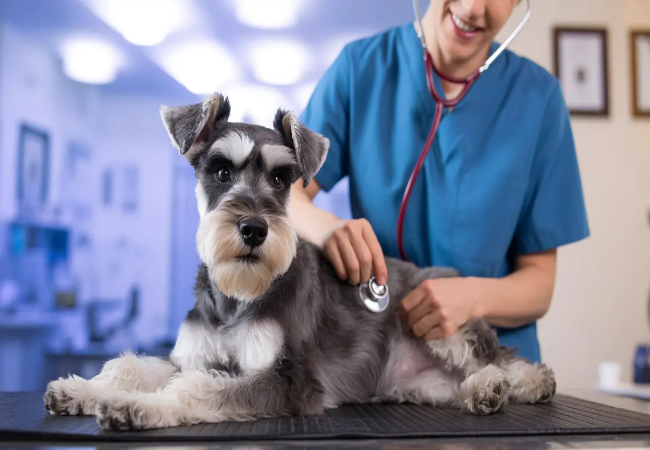Bile Duct Obstruction in Dogs: Vet-Approved Causes, Symptoms & Treatments (2025 Guide) 🐶💊

In this article
Bile Duct Obstruction in Dogs: Vet-Approved Causes, Symptoms & Treatments (2025 Guide) 🐶💊
By Dr. Duncan Houston BVSc
As a veterinarian, I occasionally encounter cases of bile duct obstruction in dogs, a serious condition that can significantly impact a dog's health. Understanding this condition is crucial for early detection and effective treatment. This comprehensive guide aims to educate pet owners on the causes, symptoms, and treatment options for bile duct obstruction in dogs.
🧬 What Is Bile Duct Obstruction?
Bile duct obstruction, also known as cholestasis, occurs when the flow of bile from the liver to the small intestine is impeded. Bile is essential for digesting fats and removing waste products from the body. When the bile duct is blocked, bile accumulates in the liver, leading to liver dysfunction and other health issues.
🐞 Causes of Bile Duct Obstruction
Several factors can lead to bile duct obstruction in dogs:
- 🪨 Gallstones (Cholelithiasis): Solid formations that can block the bile duct.
- 🦠 Inflammation: Conditions like pancreatitis can cause swelling that compresses the bile duct.
- 🧬 Neoplasia: Tumors, either benign or malignant, can obstruct the bile duct.
- 🦠 Parasitic Infections: Parasites can cause blockages or inflammation.
- 🤕 Trauma: Injury to the abdomen can damage the bile duct.
- 🩺 Post-Surgical Complications: Scar tissue from previous surgeries can lead to obstruction.
Certain breeds, such as Miniature Schnauzers and Shetland Sheepdogs, are more predisposed to conditions like pancreatitis, which can increase the risk of bile duct obstruction.
⚠️ Symptoms of Bile Duct Obstruction
Symptoms can vary depending on the underlying cause but may include:
- 🌡️ Jaundice: Yellowing of the skin, eyes, and gums.
- 😴 Lethargy: Decreased energy levels.
- 🍽️ Loss of Appetite: Reluctance to eat.
- 💩 Pale Stools: Light-colored feces due to lack of bile.
- 🧃 Dark Urine: Deep yellow or orange urine.
- 📉 Weight Loss: Unintended loss of body weight.
- 🩸 Bleeding Disorders: Increased tendency to bleed or bruise.
If you notice any of these symptoms in your dog, consult your veterinarian promptly.
🩺 Diagnosing Bile Duct Obstruction
Diagnosis involves a combination of clinical evaluation and diagnostic tests:
- 🔬 Blood Tests: Assess liver function and detect signs of infection or inflammation.
- 🖼️ Imaging: Ultrasound or X-rays to visualize the bile duct and surrounding structures.
- 🧪 Urinalysis: Evaluate kidney function and detect bilirubin levels.
- 🔍 Biopsy: In some cases, a tissue sample may be needed to determine the cause.
Accurate diagnosis is essential for effective treatment planning.
💊 Treatment Options
Treatment strategies depend on the underlying cause of the obstruction:
- 💊 Medications: Antibiotics for infections, anti-inflammatory drugs, or medications to dissolve gallstones.
- 🔪 Surgical Intervention: Removal of obstructions, tumors, or damaged sections of the bile duct.
- 💧 Supportive Care: Intravenous fluids, nutritional support, and pain management.
- 🥗 Dietary Management: Special diets to support liver function and reduce strain on the digestive system.
Early and appropriate treatment improves the prognosis significantly.
🛡️ Preventing Bile Duct Obstruction
Preventive measures include:
- 🥗 Balanced Diet: Feeding a diet appropriate for your dog's age, breed, and health status.
- 🏃 Regular Exercise: Maintaining a healthy weight to reduce the risk of gallstones.
- 🏥 Routine Veterinary Check-ups: Early detection and management of health issues.
- 🦟 Parasite Control: Regular deworming and flea/tick prevention.
Implementing these measures can reduce the risk of bile duct obstruction and promote overall health.
📱 Support and Resources
If you suspect your dog has a bile duct obstruction, consult your veterinarian promptly. For additional support:
- Ask A Vet: Access professional veterinary advice through the Ask A Vet platform.
- Download the Ask A Vet App: For quick access to veterinary support, download the Ask A Vet app.
Early diagnosis and appropriate treatment can significantly improve your dog's quality of life.
🐾 For more expert advice and pet care tips, visit AskAVet.com.






